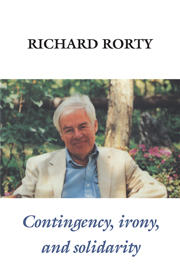2 - The contingency of selfhood
Published online by Cambridge University Press: 05 June 2012
Summary
As I was starting to write on the topic of this chapter, I came across a poem by Philip Larkin which helped me pin down what I wanted to say. Here is the last part of it:
And once you have walked the length of your mind, what
You command is as clear as a lading-list
Anything else must not, for you, be thought
To exist.
And what's the profit? Only that, in time
We half-identify the blind impress
All our behavings bear, may trace it home.
But to confess,
On that green evening when our death begins,
Just what it was, is hardly satisfying,
Since it applied only to one man once,
And that man dying.
This poem discusses the fear of dying, of extinction, to which Larkin confessed in interviews. But “fear of extinction” is an unhelpful phrase. There is no such thing as fear of inexistence as such, but only fear of some concrete loss. “Death” and “nothingness” are equally resounding, equally empty terms. To say one fears either is as clumsy as Epicurus's attempt to say why one should not fear them. Epicurus said, “When I am, death is not, and when death is, I am not”; thus exchanging one vacuity for another. For the word “I” is as hollow as the word “death.” To unpack such words, one has to fill in the details about the I in question, specify precisely what it is that will not be, make one's fear concrete.
- Type
- Chapter
- Information
- Contingency, Irony, and Solidarity , pp. 23 - 43Publisher: Cambridge University PressPrint publication year: 1989
- 4
- Cited by



